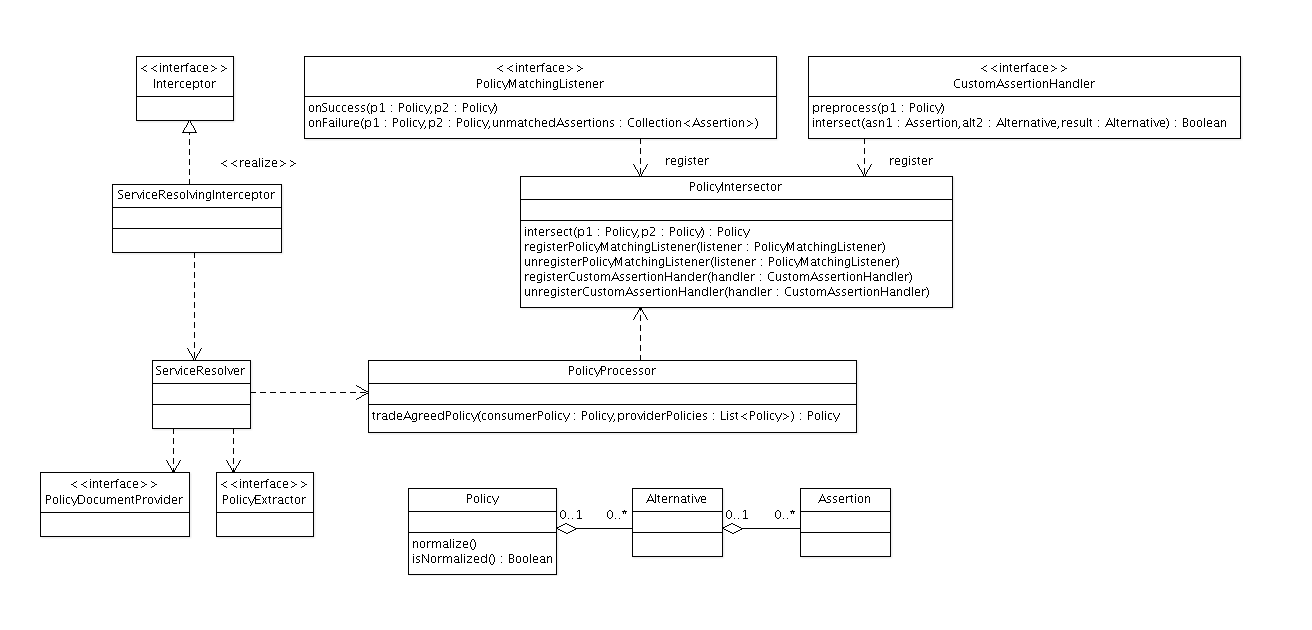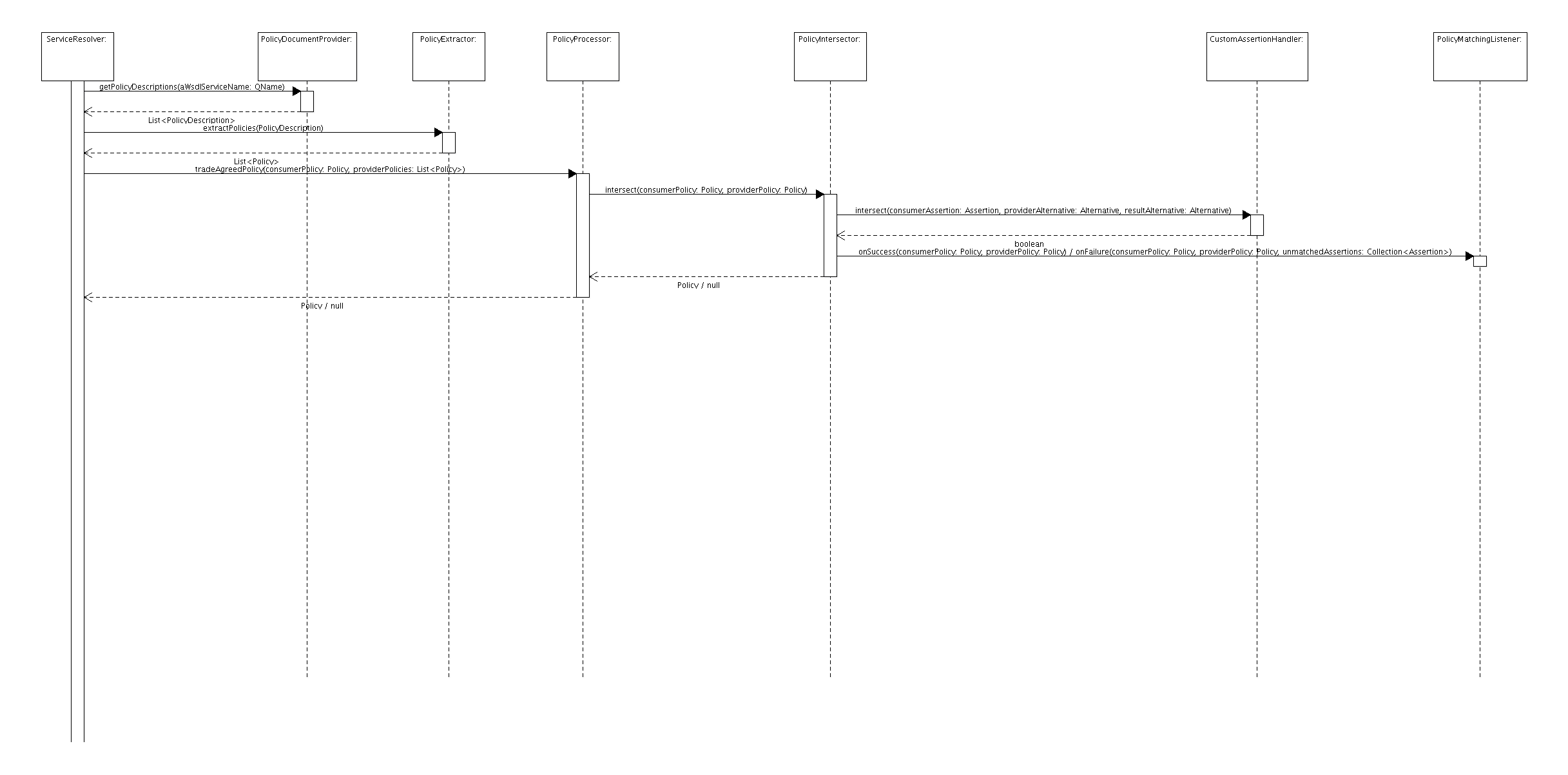Notice: this Wiki will be going read only early in 2024 and edits will no longer be possible. Please see: https://gitlab.eclipse.org/eclipsefdn/helpdesk/-/wikis/Wiki-shutdown-plan for the plan.
Difference between revisions of "Swordfish Documentation: Architecture: Policy Trading Plugin"
(New page: Sketch of Component Classes for Policy Trading (under construction): Image:Policy_Resolution_and_Trading_Classes.png) |
|||
| (6 intermediate revisions by 2 users not shown) | |||
| Line 1: | Line 1: | ||
| − | Sketch of Component Classes for Policy Trading (under construction) | + | == Overview == |
| + | == Description (under construction) == | ||
| + | The ServiceResolver retrieves policies in a two-step way very similar to the retrieval of endpoints. | ||
| + | |||
| + | * In a first step, a PolicyDocumentProvider is queried for raw policy documents corresponding to consumer and provider of the present service invocation. The PolicyDocumentProvider may get the policy documents from local storage or querying a remote registry. | ||
| + | |||
| + | * The second step is the extraction of the policy from the policy document for which purpose the ServiceResolver invokes a suitable PolicyExtractor. | ||
| + | |||
| + | * After retrieval of the consumer policy and all provider policies assigned to the desired provider, it invokes the PolicyProcessor for policy trading, which either returns an agreed policy for the first matching policy pair (consumer policy with first matching provider policy) or null if no policy matches. | ||
| + | |||
| + | * The PolicyProcessor delegates the work to a policy intersector component which deals with the platform policies, while outside the PolicyProcessor Policy and related objects are wrapped as Swordfish objects in order to reduce dependencies from the platform used for policy handling. | ||
| + | |||
| + | * The platform policy intersector is extensible allowing registration of handlers for custom policy assertions and listeners of the policy matching process. | ||
| + | |||
| + | === Sketch of Component Classes for Policy Trading (under construction) === | ||
[[Image:Policy_Resolution_and_Trading_Classes.png]] | [[Image:Policy_Resolution_and_Trading_Classes.png]] | ||
| + | |||
| + | === Sketch of Policy Trading Sequence (under construction) === | ||
| + | [[Image:Policy_Resolution_and_Trading_Sequence.png]] | ||
| + | |||
| + | == See also == | ||
| + | [http://www.eclipse.org/swordfish/docs/apidocs Swordfish JavaDoc] | ||
| + | <br/><br/> | ||
| + | ---- | ||
| + | [[Swordfish_Documentation:_Architecture | Architecture overview ]] | ||
Latest revision as of 05:10, 20 November 2009
Contents
Overview
Description (under construction)
The ServiceResolver retrieves policies in a two-step way very similar to the retrieval of endpoints.
- In a first step, a PolicyDocumentProvider is queried for raw policy documents corresponding to consumer and provider of the present service invocation. The PolicyDocumentProvider may get the policy documents from local storage or querying a remote registry.
- The second step is the extraction of the policy from the policy document for which purpose the ServiceResolver invokes a suitable PolicyExtractor.
- After retrieval of the consumer policy and all provider policies assigned to the desired provider, it invokes the PolicyProcessor for policy trading, which either returns an agreed policy for the first matching policy pair (consumer policy with first matching provider policy) or null if no policy matches.
- The PolicyProcessor delegates the work to a policy intersector component which deals with the platform policies, while outside the PolicyProcessor Policy and related objects are wrapped as Swordfish objects in order to reduce dependencies from the platform used for policy handling.
- The platform policy intersector is extensible allowing registration of handlers for custom policy assertions and listeners of the policy matching process.


